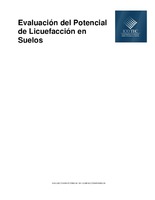Evaluación del Potencial de Licuefacción en Suelos
Abstract
The phenomenon of liquefaction is one of the most important, interesting and controversial subjects in the earthquake geotechnical engineering. Its devastating effects attracted the worldwide attention of the geotechnical engineering community in 1964, when the large Alaskan earthquake was followed by Niigata earthquake in Japan, both over 7.5 degree of Richter magnitude. The behavior of soils when and earthquake occurs, has been studied many years, because the damage produced by the magnitude of earthquake can be directly influence by the features of the soils. The inadequate behavior of the loose soils under earthquake conditions, especially the phenomena of liquefaction in cohesionless material, has produced economic and human effects around the world. For this reason, a lot of investigation work has been undertaken to develop liquefaction assessment methods and the design of mitigation methods. The liquefaction phenomenon is a very complex topic and many variables are involved, hence, the conditions underwhich a loose cohesionless soils experiences a rapid reduction in strength are not completely understood representing an excellent field of investigation.
The project was conducted following a study of the behavior of a ground to a possible earthquake by applying a software capable of measuring the susceptibility to soil liquefaction, it rescued the use of two different methods of assessment, implemented by leading researchers of this controversial topic, such studies were made with the aim of having a range of comparison between the two.
Description
Proyecto de graduación (Licenciatura en Ingeniería en Construcción) Instituto Tecnológico de Costa Rica, Escuela de Ingeniería en Construcción, 2008.


